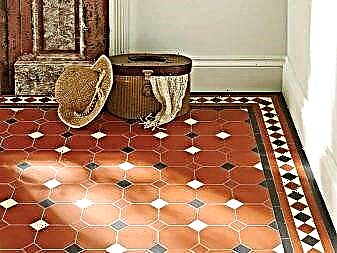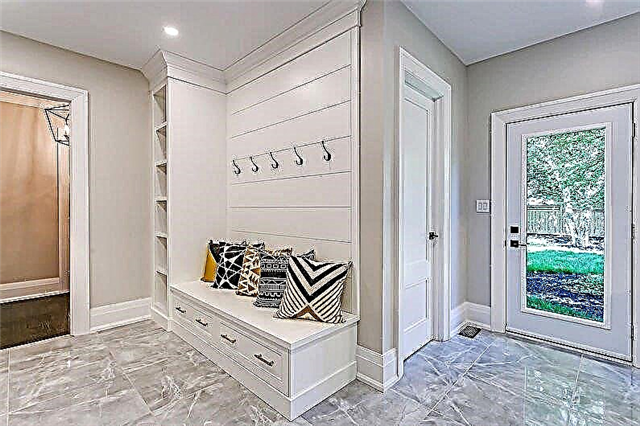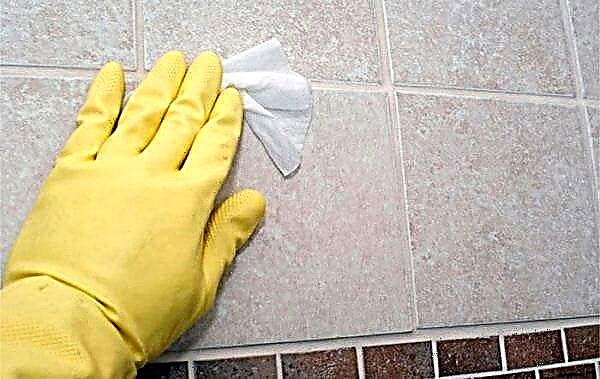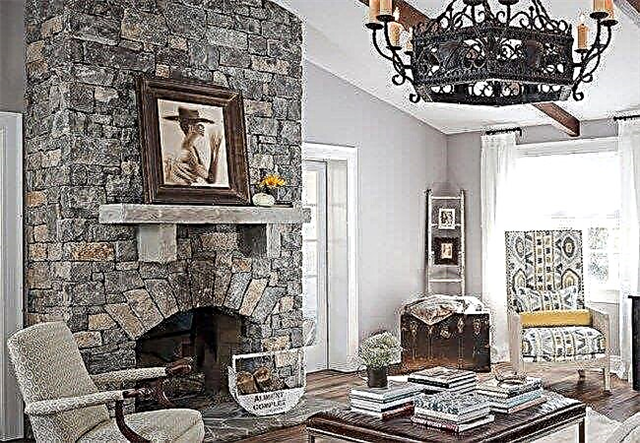
Floor tiles are a fairly popular coating. And this is no accident. This material is quite durable, easy to care for. In addition, it has a fairly wide range of colors, which allows you to choose a coating for almost any design decision.
How does colored floor tile look in the interior and how to fit it into the interior?


Colored floor tiles have many types. Firstly, it is divided by production technology.
Three main types can be distinguished here:
- Clinker. It is made from clay without the addition of any coloring pigments, as well as plasticizers. Such tiles are usually terracotta, brown or beige. Suitable for installation both in residential premises and on the street. It is distinguished by durability and the complete absence of glaze on the finish layer.
- Tile. This is a ceramic tile, which includes clay, sand, as well as mineral additives. The tile is strong enough, but not suitable for rooms with a large influx of people. Due to the use of colored glaze, this facing material can have any color, including ornaments.


- Porcelain Tiles. This material is durable and wear resistant. They can finish floors even in large supermarkets, where a large number of people pass. Its coloring is also quite wide, and this material can decorate any interior.
Colored floor tiles may have different coatings. It comes in matte or glossy shine. Also, this coating can transmit various textures of materials, for example, brushed wood, concrete.


Color spectrum
The choice of color floor tiles in stores is quite wide. Here you can find monophonic samples, while their shades can be absolutely any:
- white and black color
- pastel colors like pink, blue,
- bright saturated colors, for example, scarlet, lemon, emerald.
Quite often, colored floor tiles are made with various patterns. It often uses floral or geometric patterns, as well as motifs inherent in Eastern peoples and European traditions.
How to choose?
The choice of colored floor tiles should depend on several factors:
- It is necessary to determine what load the floor will bear in this room. Based on how many people will be in the room at the same time, how much furniture will be installed, it is necessary to determine the type of flooring.
- Depending on the purpose of the room and your own preferences, you need to choose a tile cover. Remember that the matte tile is perfect for the bathroom, as it prevents wet feet from slipping, but it is not recommended to lay it in the kitchen, since it is quite difficult to wash the rough surface. Gloss, on the contrary, will contribute to gliding and can be extremely traumatic. But removing dirt from such a coating is much easier than with textured matte material.


- The color of the floor should be combined with the decor of the room. Here it is better to use the rules of colorization and choose standard combinations, for example, gray - pink, white - blue. At the same time, the colored floor can become both the basic background of the room, and an accent in it. In the second case, the cover will require any support, for example, a vase or pillows on the sofa to match.
- Colored tiles on the floor should also support the style of the room. The bright floor with geometric lines in a classically designed room or the Turkish-style tiles in the room of hi-tech and minimalism styles will look rather ridiculous.
Styles
In classic interiors, a look that simulates parquet, laid in the form of various patterns, looks good. Also, the floor decorated with tiles with a color for various minerals, for example, malachite, will look quite original.

If you choose a multi-colored tile, then you need to give preference to simple drawings in the form of small rhombuses or twisted lines. Moreover, quite often with the help of multi-colored tiles in the classic, an imitation of a carpet is laid on the floor, around which monochrome basic elements are used.
The color of such a carpet depends on the stylistic direction. For example, Provence is characterized by a coloring with a floral ornament, for country - a tile imitating a patchwork using a patchwork technique, for Rococo and Baroque - a gilded ornament.
In modern styles, the floor can be monochrome, unusual bright shades, have a picture over the entire area or also be decorated in the form of a carpet. Here, a combination of tiles of several colors is often used or a panel is created manually for a specific design solution.
So, for the hi-tech style, a coating of dark restrained shades with a large geometric pattern, moving from one element to another, is characteristic.
For the pop art style, bright contrasting tiles of several colors are usually laid.
Floor tiles in the corridor: design options (selection of photos)
The floor in the corridor, kitchen and hallway is subject to the most massive loads, especially in comparison with other areas of the apartment. Therefore, an extremely wear-resistant coating should be used. Tile finishing belongs to this category, which can last for a long time.




Note! During the selection of material it is not necessary to give preference to a tile with high technical parameters. In real life, the difference is not particularly noticeable, but their cost is an order of magnitude higher than that of products with average characteristics. But it is also not recommended to choose a low grade, it is more likely to get defective products.

You should study the characteristics of all types of tiles and consider different options for finishing floors with such a coating.
For an ideal result, you will need to choose modern materials that meet these features:
- wear resistance not less than PEI 3 classes,
- moisture resistance - more than 3%,
- friction indicators - up to 0.75%,
- the best choice of manufacturer - Italian and Spanish companies,
- reliable tile in the corridor - first grade,
- drawing, size and texture depends on the preferences of the owners of the apartment.

The main criterion for choosing a tile is usually not external properties, but quality.
Advantages and disadvantages of floor tiles in the corridor
The tile on the floor in the corridor demonstrates many advantages:
- Excellent hygiene features. This type of decoration is the best option for placement in a room where there is a high amount of pollution. Due to the smoothness and evenness of the tile is easy to clean, does not accumulate dust. It tolerates the action of detergents with aggressive components.
- The increased durability. Correct laying of tiles, taking into account all norms and standards, allows it to withstand massive mechanical loads and damage, while its color is not lost.
- Qualitatively selected material will last about fifty years. Throughout the entire operational period, the tile will retain its attractive appearance.
- Resistance to moisture and fire. Tile perfectly tolerates high humidity and flooding. Ceramic tile does not burn during a fire.
- Ease of restoration. If damage is found, they can be replaced locally, that is, without dismantling the entire surface.
- Environmentally friendly component that does not harm human health.
- A wide assortment, among which each homeowner will be able to choose their own exclusive beautiful variation (colors, patterns, sizes, textures).

Since the entrance hall is usually high traffic and high humidity, they get the highest quality and most dense tiles.
Like all finishing components, floor tiles in the hallway have a number of disadvantages, for example, difficulties during installation.
- Poor quality approach can lead to the formation of defects. In order to avoid such troubles, it will be necessary to arrange a perfectly smooth and dry floor.
- Low noise insulation properties. This can be fixed by laying a special layer during screeding.
- The material itself is cold, but perfectly conducts heat. Therefore, it is recommended to use the insulation system.
- Glossy surface. It is preferable to choose a rough texture that will make the floor non-slip.

It is necessary to study the markings on the packaging with tiles and give preference only to models that are designed for such premises.
The role of color and texture of tiles on the overall look of the hallway interior
Having visited a hardware store, many consumers are faced with a wide range of products for flooring. After looking at the photo of the tiles in the corridors on the floor, you can see that it differs in size, shape, texture and gamut of shades. What variation should I look for?

A feature of the tiles for the hallway and corridor is that it must be non-porous.
Interior designers recommend listening to these tips:
- The decor of the hallway and the kitchen is optimal with tiles with a rough surface. In this way, gliding can be reduced, but it should be remembered that pollution can stagnate in large furrows. Glazed surface has excellent moisture resistance and durability.
- When choosing a color design, the remaining elements of the apartment design should be considered.
- The white and black palette is considered the brand itself, but their combination in the form of a chessboard, diagonal rhombuses is a stylish classic that is always at the peak of popularity.
- The most successful colors for tiles are brown, beige, gray.
- The most popular option is imitation of natural stone or wood.

As a rule, models designed for such rooms have a low percentage of water absorption and good protection against deformation and moisture absorption.
Features
It is a mistake to believe that colored tiles are just a mixture of different colors and shades. This can be a certain pattern, for example, imitation of brickwork, wooden floor and other types of ornaments on ceramic floor tiles.
You can use it in a variety of interiors, from classics to ambiguous styles such as shabby chic or modern trends.
For example, imitation of masonry can fit well with the Provence style, and tiles made for metal, effectively complement styles such as high-tech or minimalism.
But the most important thing to remember is that whatever the flooring is, the main thing is that the owner of the house likes it. Only in this case it is possible to create from the uncomplicated, at first glance, material, very original and bold compositions and combinations.
Varieties
Floor tiles have quite significant differences from linoleum or parquet. It has a high level of wear resistance and excellent durability. It can also withstand a fairly large weight.
Currently 2 large groups of tile types can be distinguished, depending on the type of production:
- pressed (the result of pressing a special material - a mixture),
- extruded (push a special mass through the holes, cut and burn).
According to other criteria, the following types of tiles can be distinguished: porcelain tile, porous, metlach, glazed and unglazed, clinker - these are options that are based on ceramics. Also currently there is such a tile on the floor, which is created on the basis of synthetic and natural materials. It could be:
- carpet tile (colored or plain, depending on the customer’s wishes. It is convenient in that it can be easily laid and replaced by worn parts with new ones),
- synthetic tile (very durable with proper care and maintenance),
- rubber-based tiles (this product is created by recycling old tires and other rubber items),
- cork-based tiles.
The basis for laying any type of plate can be a material such as drywall, plywood, old tile or old paint, on which a special grid is laid.
It is worth noting that it is not recommended to lay the tile on aerated concrete or foam concrete base.
Advantages and disadvantages of tiled floors
If the tile was chosen for the floor, it is worth remembering that it, like any other type of flooring material, has its pros and cons, which should not be forgotten. For example, the advantages of tiled floors are that:
- it is an environmentally friendly material (if we talk about ceramic tiles),
- this material is very durable compared to other floor coverings,
- has high moisture resistance,
- very wear-resistant (this is one of the most durable materials),
- It has high practicality (cleaning behind tiles does not cause trouble) and fire resistance.
But, despite all these advantages, you need to remember that the coating has significant drawbacks. For instance:
- the floor surface will always be cold,
- material in different situations can manifest itself as quite fragile,
- sound insulation is very poor,
- if the floor is wet, it will be very slippery.
If you choose this material and choose to buy the right type of tile with all responsibility when choosing a flooring, you can choose the perfect option without much effort.
Where to use?
The color of the future floor plays a big role in choosing a stove, because it should be in harmony with the rest of the room and give it a finished look, and perhaps even be the highlight of the interior, from which it is impossible to take your eyes off.
In order for the floor to be just that, you need to consider not only its technical characteristics, but also the color scheme of the entire room and floor in order to create a harmonious combination. Floor tiles can be plain or multi-colored. Multi-colored is characterized by a large number of colors on a small piece of tile.
For each room, the tiled floor should have its own:
- Tile in the corridor - Perhaps this is the best decision that can be made during the repair. It is precisely because the dirt most often accumulates in the corridor, and the tile is very easy to clean and does not wear out.
- Also a good solution is to lay the tiles on the kitchen. Since in the kitchen often a small area of the floor covering can be damaged and does not look very aesthetically pleasing, and the tile can easily be replaced, I can’t dismantle the entire cover.
- The tiled floor will look interesting and unusual in the living room or in the bedroom.
If we return to the question of choosing a color, it is worth recalling: the tile should be in harmony with the interior of the room. It can be combined with decor or be in bright contrast. In any case, the flooring should not get out of the picture.
Care Tricks
The tiled floor, in comparison with other types of floor coverings, is very beautiful and can last quite a long time. But this is only subject to its proper operation and proper care.
Basic recommendations for the care of floor tiles:
- tiled floors need to be washed with warm water and wiped dry,
- Do not wash floors with water with the addition of detergents based on soda or alkali,
- washing with water with the addition of soap or powder is allowed,
- strong pollution that remains after washing with water can be removed with turpentine,
- To care for the tiled floor, a special industrial mastic is also used.
See how to choose floor tiles in the next video.
Styling methods
Colored tiles can be laid in one of several ways:
- Normal. Here, the coating elements are laid parallel to the walls. This method is suitable for laying both monophonic and multi-colored tiles. In the first case, you can use contrasting putty joints to make the coating look more original.
- Diagonally. This method is suitable for any coating color. In this case, the tile joints go along the diagonal of the room. When buying a facing material, you need to take into account the increased consumption of elements, since the tile will have to be cut a lot.


- In a run. This installation imitates brickwork. It is more suitable for plain elements. In this way, it is quite interesting to lay tiles of different colors.
- Art styling. Here, using elements of different colors, whole works of art are created. This method requires high skill and a large investment of time and material.


In which cases you need to choose light and dark tiles
Light products for floor decor perfectly visually expand the area of the room. If the hallway is spacious, it is possible to give preference to a dark tile. In such a situation, it will be necessary to make more emphasis on light, for example, to place furniture and other interior details of this color.

The materials from which hallway tiles are made are usually durable and wear-resistant.
The color of the tiling directly depends on the design variations, the orientation of the windows. If there are no windows in the hallway or they face the north side, it is recommended to choose a tile in a plain light color. Dark tones can pick up the natural light in a room. For the south side, more saturated scales are suitable.

A good coating can last about 50 years without changing its external and quality characteristics.
Popular patterns, shapes and colors in 2019
This year are considered relevant:
- color scheme - neutral and warm colors (beige, walnut, pastel, gray),
- filling with patterns - ethnic, geometry, ornaments, small neutral patterns, relief elements,
- form - a classic square, rectangle, as well as modern rhombuses, hexagons, circle, trapezoid.

The composition of the floor tiles is completely harmless, so it is safe for humans.
It is possible to use several harmoniously combined options at the same time.

A feature of this coating is that it can be easily restored.
Choose a tile for a specific design of the corridor
There are many variations of interior design, real estate owners most often choose the following styles in which tiled decor looks incredibly stylish.

The color of the tiles for the corridor is selected depending on the interior design.
The industrial aesthetics of this area allows the use of various interpretations and combinations. For example, tile looks like wood, stone or concrete. If the walls are bricked, the detailed elements of various shapes, contrasting elements will look sophisticated.

In this variant, fragments of various forms that clearly contrast with other compositional objects will be accented.
High tech
It is characterized by the use of high technology and traditional solutions. In such a design, you can use large blocks in one tone, a deep texture, dullness. The colors of the tiles should be made in strict, natural shades, which continues the range of monochrom.

Colors, for hi-tech style, it is better to choose natural shades. They will continue the monochrome palette of the interior, making it interesting and complete.
Classical
The classics will sparkle with new colors, especially if a sufficient number of residential meters contributes to this. Here, the gloss adds luxury and elegance. It is recommended to pay attention to marble imitation with granite or traditional patterns, for example, honeycombs.

In the classic style, gloss on the floor will be appropriate.
Other styles
If the apartment has ethical design elements, it is better to give preference to patterns and ornaments. For a minimalist interior, it is preferable to choose monochrome, and for Art Nouveau - bright and saturated components.

A combination of gloss with porcelain stoneware with a classic pattern or surface resembling marble will look good.
Porcelain Tiles
It is considered a premium class, as the tile offers enhanced strength characteristics. It is made from a special substance that contains rocks, high-quality clays and natural dyes. The tile is characterized by low porosity, due to which it almost does not absorb moisture. Due to the unique composition and reliable functions, it has a high cost.

Porcelain tiles cost much more than other types of tiles, but even in a hallway with high traffic, it can serve for many years.
Ceramic
It is a huge success among interior designers and builders. It is placed in the lobby, bathroom, kitchen, hallway. It is made by the method of burning clay, which makes it heavy-duty, reliable and durable. She is not afraid of temperature changes, demonstrates a cold surface at any time of the year. Many varieties in form, color, texture allow you to create incredible designer compositions.

Ceramic tile is the most fragile of all options.
Other options
There are also other variations, for example, quartz vinyl tiles. Such a product is resistant to temperature changes, is not afraid of aggressive chemistry.

A more universal option for the hallway is a monophonic coating.
Tiled decoration of the corridor and hallway is a wonderful and practical solution to fill the room with cosiness and sophistication. Optimum technical specifications and a wide range of products allow you to implement the most daring design ideas and creative ideas.
Original ideas in the interior
For the original design of the floor, designers quite often use colored tiles in their projects. Here are some original ideas that might interest you.
- Using colored tiles, separate zones are highlighted on the floor. The pool floor is decorated in blue and blue, while the gym area is decorated with warm shades of yellow and orange. The same color data is connected on the wall, where they overlap.

- Blue tiles on the bathroom floor are diluted with small decorative elements to match the walls, and the skirting board on the ceiling echoes the color of the floor.
- The Provence-style bathroom is complemented by a floral "carpet" on the floor, which is supported by a border on the walls.


In the next video you will find the secrets of choosing ceramic tiles on the floor.



